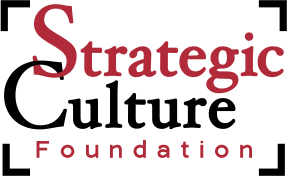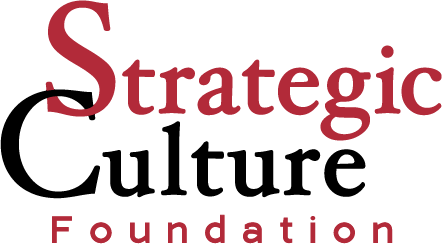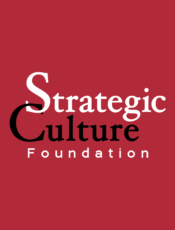By Gript COLUMN
Join us on Telegram![]() , Twitter
, Twitter![]() , and VK
, and VK![]() .
.
Contact us: info@strategic-culture.su
During his vacation in Castel Gandolfo, Pope Leo XIV is not allowing himself true rest. Within the walls of the papal residence, the American Pontiff is reviewing—among other things—a series of strategic dossiers concerning the leadership of the Roman Curia.
These are sensitive documents, touching on names, roles, and trajectories of continuity or rupture with the recent past. In particular, crucial decisions appear to be taking shape regarding the confirmation or replacement of key figures within the Secretariat of State—choices that will influence not only the internal balance of the Curia, but also the future direction of Vatican geopolitics.
When discussing geopolitics within the Catholic Church, it is important to distinguish three distinct dimensions, which nonetheless fall under the same label. First and foremost, there is Catholic geopolitics understood as a discipline—that is, a body of theoretical knowledge rooted in the doctrine of the Roman Catholic Church and independent of historical contingencies. Within this discipline, various schools of thought exist, shaped by historical and theological currents that influence its framework and priorities.
Secondly, there is the geopolitics of individual Popes. Upon election, each pontiff inherits the geopolitical legacy of his predecessor—a set of challenges, opportunities, and unresolved issues. In turn, every Pope leaves a distinct personal mark on the Vatican’s geopolitical choices. This is shaped by various factors, such as his nationality and the degree of alignment with his country of origin (or its broader geopolitical bloc).
Finally, there is geopolitics understood as a diplomatic doctrine carried out by the Curia, and more specifically by the Secretariat of State. In fact, one could say that, at least since the reign of Paul VI (though to a good extent even earlier), the Vatican Secretary of State has consistently pursued a political-diplomatic agenda that often runs parallel to—and independently from, though not necessarily in opposition to—the will of the reigning Pontiff. Beginning with Jean-Marie Villot (in office from 1969 to 1979), a nearly uninterrupted continuity has developed in Vatican diplomatic strategy, whose most prominent representatives are Agostino Casaroli and Achille Silvestrini.
This “parallel regency” effectively exists within the Church, even though it is systematically denied—rightfully from a legal standpoint, and strategically from an institutional communication perspective. It was likely interrupted or significantly scaled back only during the pontificates of Benedict XVI and Francis, albeit for very different reasons. During Benedict XVI’s years, the leadership of Angelo Sodano (1991–2006) and especially Tarcisio Bertone (2006–2013) marked Ratzinger’s ultimately unsuccessful attempt to shift Vatican diplomacy from a multilateral approach to a more “isolationist” one, focused on internal Church dynamics and issues. Notably, Bertone did not come from the diplomatic corps, but from the Congregation for the Doctrine of the Faith. This attempted paradigm shift, unsurprisingly, led to numerous problems and internal clashes within the Curia, culminating in Benedict XVI’s resignation from the ministry of Bishop of Rome in February 2013 and the gradual restoration of diplomacy rooted in Casaroli’s tradition.
Following the papal election of Bergoglio, Silvestrini—his influential, albeit external, “popemaker”—recommended Parolin as Bertone’s successor. As is well known, however, the Argentine Pope sought to reassert much more direct control over curial affairs, a move that generated widespread discontent not only among his critics but also among some of his early supporters. In certain cases, this even led to significant economic complications. According to various internal sources, Cardinal Pietro Parolin himself (also shaped by the Casaroli-style diplomatic tradition) has at times expressed frustration over the limited freedom of action granted by Bergoglio to the Secretariat’s operations. In the final years of his pontificate, Francis increasingly favored the “parallel” diplomatic path promoted by the Community of Sant’Egidio, likely considering it more manageable than the traditional curial structures.
With the election of Leo XIV in 2025, there was an immediate return to the order made by Paul VI. This was due in large part to his unfamiliarity with the curial environment and limited experience in Rome—let’s not forget that Prevost had been made a cardinal by Francis and appointed to lead one of the Curia’s most strategic dicasteries only two years earlier his election.
Pope Leo relies heavily on the support of curial officials. This is likely one of the most dangerous and double-edged tools at his disposal: while his trust and esteem for the Roman Curia—not only for the prefects but for all those working within the dicasteries—has sparked a wave of enthusiasm and reciprocal affection, it also empowers those curials who seek greater freedom to operate “behind the scenes,” without the Pope being fully aware of the processes they set in motion. This also explains why Pietro Parolin, who had hoped to be elected pope in May 2025, chose—while the conclave was still underway—to redirect his faction’s votes toward the American candidate. He knew well that serving as Secretary of State under Prevost would be far more ‘manageable’ for reforming the Catholic Church than doing so under Bergoglio or as pope himself. And indeed, that has been the case from the very beginning.
Pope Leo XIV confirmed Parolin’s hopes when he uttered a particularly significant phrase—one that, in truth, sparked considerable enthusiasm even within the more traditionalist circles of the Catholic world: “Popes pass, the Curia remains. […] The Curia is the institution that preserves and transmits the historical memory of a Church, of the ministry of its bishops. This is very important. Memory is an essential element in a living organism. It is not only directed to the past, but nourishes the present and guides the future. Without memory, the path is lost, it loses its sense of direction.” (May 24, 2025).
Pope Leo XIV now intends to give fresh momentum to the Secretariat of State, restoring it to its former effectiveness. Among the dossiers he is carefully reviewing during his vacation in Castel Gandolfo, the one concerning the Secretariat stands out. According to some observers, one of Pope Prevost’s priorities is the confirmation of Parolin as Secretary of State (at least until 2030, when the cardinal from Vicenza will turn 75), and of Paul Richard Gallagher as Secretary for Relations with States, alongside the replacement of Edgar Peña Parra, Parolin’s current deputy. The Venezuelan archbishop is reportedly implicated in the real estate operation involving the building on Sloane Avenue in London, which was at the center of an investigation that led to the first-degree conviction by the Vatican Tribunal of his direct predecessor, Cardinal Angelo Becciu—a figure more closely aligned with the Benedict-style diplomatic school.
According to other observers, however, Pietro Parolin could be replaced by Archbishop Gabriele Giordano Caccia, the Permanent Observer of the Holy See to the United Nations and likewise a representative of the Casaroli-style diplomatic school. Therefore, Caccia’s potential appointment as Secretary of State should not be interpreted as sidelining Parolin, who would continue to influence diplomatic decisions from behind the scenes, in the role of a “grey eminence.”
In the coming months, the decisions Leo XIV will make regarding curial appointments and confirmations will shape not only the internal balance of power within the Vatican, but also the overall direction of his international agenda. A potential choice to rely on seasoned figures rooted in the Vatican’s diplomatic tradition—such as Parolin and Gallagher—signals a desire to consolidate a cautious and multilateral approach. However, this path carries a risk: that the curial apparatus may once again exert an autonomous and pervasive influence, one that even the occupant of the Chair of Peter may struggle to control. Ultimately, what’s at stake is not only the internal stability of the Curia, but the Vatican’s ability to play a credible and coherent role on the global geopolitical chessboard.
Original article: gript.ie








